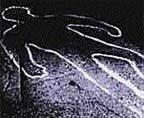
Lawrence University has come a long way since its humble beginnings in 1848. But what hasn’t changed much since, say, the first decade of the campus, is human nature. Students have been getting into trouble since the school was founded, and often in far worse cases than in more modern times. The following cases are from the pages of the
Later that same evening, one “Mr. H Richards, a student from Janesville,” apparently climbed the structure and, in a twist of fate, fell from the very top to the ground. “He was dreadfully bruised and mangled about the head, face and hands,” wrote The Crescent, “and was taken up for dead.”
Two local surgeons were called in, who “did everything in their power to alleviate [Richard’s] sufferings.” Whether this helped is debatable.
“Although very low,” The Crescent continued, “strong hopes are entertained for his recovery.”
Evidence of this recovery or possible death was not to found in any later issues in the archives.
In another case of spring fever mischief, on May 3, 1856 a “sad accident” took place on the Fox River. The Crescent reported the drowning of Hubbull R. Wood.
A student at Lawrence, Wood was “just ready to enter upon a Collegiate course,” and was “amusing himself in a boat just below the First Ward Bridge” that afternoon along with a friend. The boat was caught in the current and “became unmanageable.”
The two students “became frightened, as the boat passed into the Rapids just above the dam.” A Mr. McPherson, from a distance away, heard their cries, “ran up and plunged in.”
It was too late though, and “but a few feet from him, young Wood sank to the bottom.” Wood was 18 years of age and “much esteemed by his associates.”
In late October of 1858, 145 years ago, another incident was cited on the campus. There was no accident involved in this case, and the information causes one to question whether race was an issue. “One C. Alf” of Appleton, “for some fancied or real offense, was seized upon in the dead hours” of the night by “an infuriated mob of young men.” The young men were “supposed to be members of Lawrence University.”
Alf, “despite his desperate struggles and cries for assistance, was hurried to a portion of the College Grounds, used as a gymnasium, a rope noosed over his neck, and without confession or shrift was there suspended between heaven and earth.”
The “dastardly perpetrators” remained unknown, as the body “was not discovered until [the] next morning,” giving “the villains […] ample time to escape the city authorities.”
The Crescent concludes that they “hope [the villains] may be speedily brought to justice.”
Whether they were ever discovered or sentenced was, once again, not to be found in the archives, leaving this suspicious case unsolved.
